Skiing in Japan: where to go and stay
The country is famous for its light-as-air powder snow. Here’s where to find it.
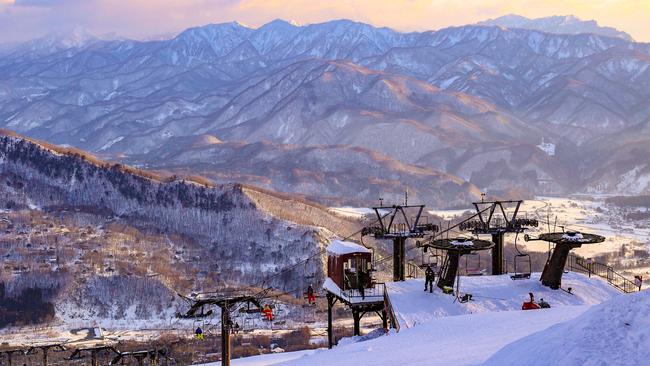
In Australia, we’re used to waiting for the snow to arrive before we can ski. In Japan, it’s sometimes a case of waiting for it to go. Take Tateyama, between Nagano and Toyama on the main island of Honshu. The road in is cut off until mid-April, when enough snow melts to allow heavy machinery to plough a path, known as Tateyama Snow Corridor, between 20m vertical walls of snow. It has to be seen to be believed.
This snow overkill is routine across Japan’s 400-plus ski resorts, and is thanks to constant storms rolling in from Siberia, picking up moisture as they cross the Sea of Japan and dumping it as snow on the western and northern mountains. It’s not just quantity but quality. Japan has the best powder in the world, so light it’s as if you’re floating. It’s also consistent. Book a 10-day ski trip to Hokkaido at the height of winter and it’s not a question of if you’ll get powder days, but how many. Known as “Japow”, it’s the pinnacle of powder.

But a Japanese ski trip is not all about snow. How often can you say the best meal of your trip came from a ski-field food court? I still remember the fresh sashimi with avocado on rice I had for lunch on the sun-kissed terrace of Escal Plaza in Hakuba Valley four years ago. Hot bowls of ramen, yakitori, okonomiyaki, sushi – ski resort food is as good as anything you’ll find in the backstreets of Tokyo.
Then there’s the convenience. A one-hour time difference means you can – in theory – fly out after work and be skiing in Japan the next day, without jetlag. And the price point of lift tickets and accommodation is undeniably appealing. Simply being in Japan is magic of its own, strolling the cobblestone streets, the smell of sandalwood incense drifting out of temples, visiting beguiling villages and bewildering vending machines. Nightlife? Not so much. It’s a place to partake rather than party. World class public transport makes getting around easy. The hard part is choosing your resort. Here’s a rundown of some you know, and maybe a few you don’t.
HONSHU
Hakuba Valley
Located in the breathtaking Japanese Alps, three hours northwest of Tokyo, Hakuba Valley comprises 10 ski resorts, linked by free shuttle bus and operating on the same lift ticket. The mountains here are higher and steeper than in Hokkaido, and get more bluebird days (but consequently less fresh powder). Hakuba offers a huge range of on and off-piste skiing, stunning mountain scenery, vibrant village life, high quality accommodation and plenty of non-skiing inducements. Take the chairlift to Field Suite Hakuba, an on-mountain fine dining restaurant, for fireside mulled wine and a five-course Italian-influenced degustation menu. Dine also at Shouya Maruhachi, a converted Edo-era farmhouse serving robatayaki (fire-grilled) cuisine. Vail Resorts’ Epic Australia Pass includes five days’ skiing at Hakuba Valley.
Stay Hakuba Tokyu Hotel
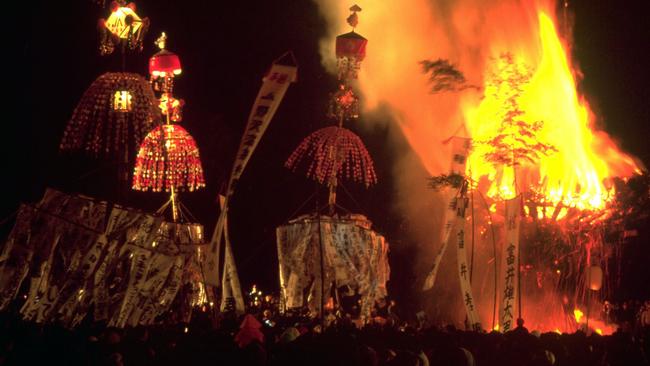
Nozawa Onsen
Westernisation has diluted the character of some resorts, but this ancient village, about an hour north of Nagano, remains resolutely Japanese. Hot springs bubble to the surface everywhere, temple bells ring out, and accommodation is mostly in ryokan, which are a rarity in most resorts. Nozawa onsen has a storied skiing history, and the terrain spans 300ha – large by Japanese standards. Expect plenty of steep bumps for advanced skiers, and an English-language ski school for beginners. Time your visit for the Dosojin Fire Festival in mid-January, an elaborate show featuring flame-wielding villagers staging a battle to burn down a shrine, aided by copious consumption of sake. It doesn’t get more Japanese than that.
Appi Kogen
In the Tohoku region of northern Honshu, Appi Kogen was gonged Japan’s best ski resort at the 2022 World Ski Awards, marking a resurgence for this glitzy resort born from Japan’s 1980s economic boom. It offers a high-end experience for all levels of skier, with modern infrastructure (including a gondola), and exquisitely groomed runs. Its luxury credentials were bolstered last year with the opening of the five-star ANA Intercontinental hotel, its 38 rooms decked out in neutral tones of stone and wood. The 300sq m presidential suite boasts a hinoki cypress bathtub, and full length windows presiding over the slopes.
Stay ANA Intercontinental Appi Kogen
Aomori
Also in Tohoku but more off the beaten track is Aomori Springs, a small but beautiful north-facing resort nestled under Mt Iwaki, with wide groomers, plenty of powder, and tree skiing through glades of beech trees. Backcountry adventurers will love the Hakkoda Mountains, and can use Hoshino Resorts Aomoriya as a base for skiing and soaking up the relaxed, rural culture.
Stay Rockwood Hotel & Spa
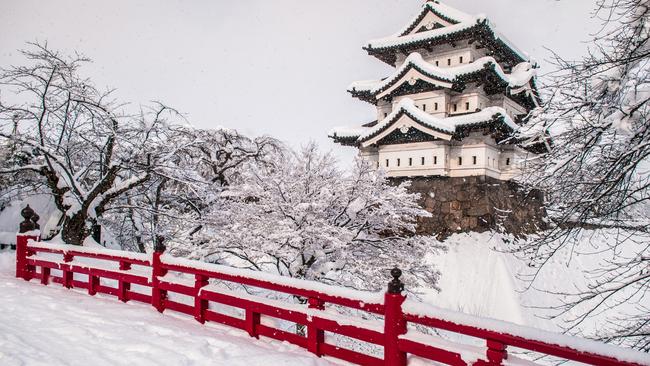
HOKKAIDO
Niseko United
Hokkaido’s most famous resort receives about 18m of snow each season, and is superbly set-up, with ski-in/ski-out hotels, top restaurants and a buzzing atmosphere. Niseko is 2½ hours’ drive from Hokkaido’s international airport in Sapporo, and comprises four inter-linked resorts: Grand Hirafu, Annupuri, Niseko Village and Hanazono. Hirafu village is centre of the nightlife, while Higashiyama Niseko Village has Japan’s only Ritz-Carlton Reserve hotel. Japanese culture can sometimes take a backseat, but the advantage is that everything is so easy (and everyone speaks English). If you seek a slope less tracked, Rusutsu is just 40 minutes away and has fantastic tree skiing, lively bars, and offers the only heli-skiing in Japan.
StayHigashiyama Niseko Village Ritz-Carlton Reserve
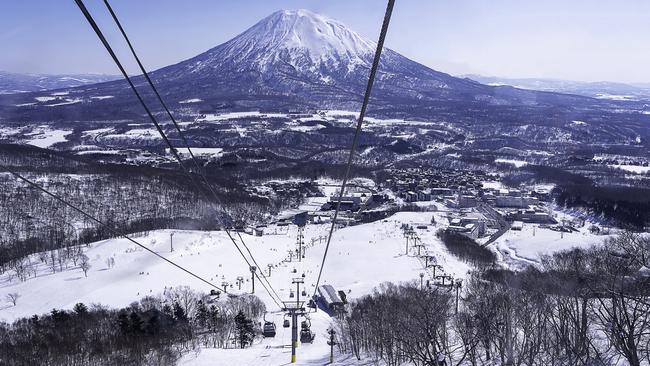
Tomamu Ski Resort
This is an emerging (and somewhat quirky) destination for luxe-loving powder junkies, dominated by four sky-scraping towers rearing out of the snow (once the tallest buildings in Japan north of Tokyo). Other uniquely Tomamu twists include Japan’s largest indoor wave pool and a village made entirely of ice. Hoshino Resorts’ luxurious Risonare Tomamu has 200 spacious suites, each with a private sauna and spa bath. As for skiing, there are 145ha of exploring to do, but a drawcard for many is the expansive, untracked backcountry. Australian-owned Alpine Backcountry Guides offers fully inclusive, powder-chasing packages which track down virgin snow every day. Some tours venture to the stunning Tokachi Mountains, while a typical Tomamu day has you darting among red pine and silver birch trees, surrounded by volcanos, ending your day in an outdoor hot springs with a beer in hand.
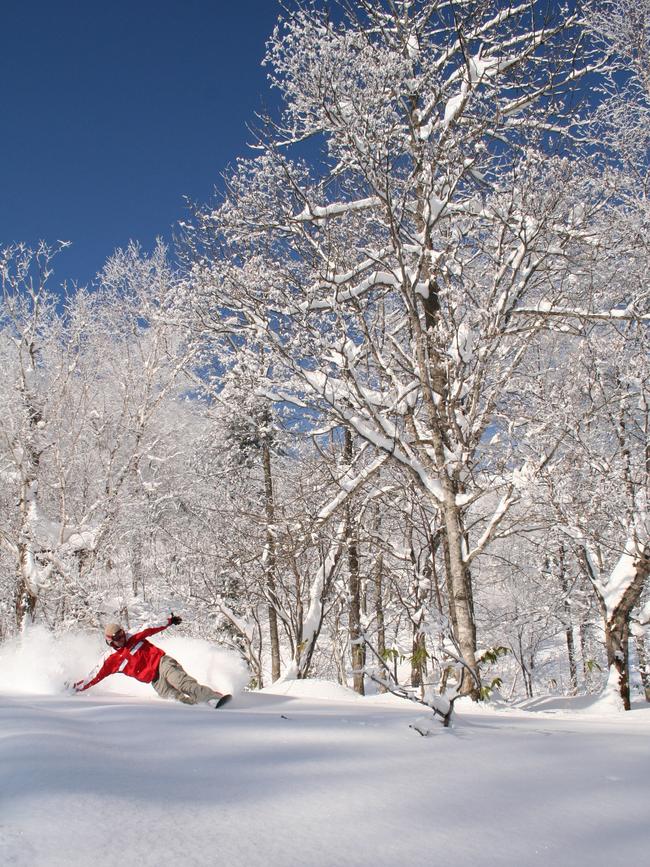
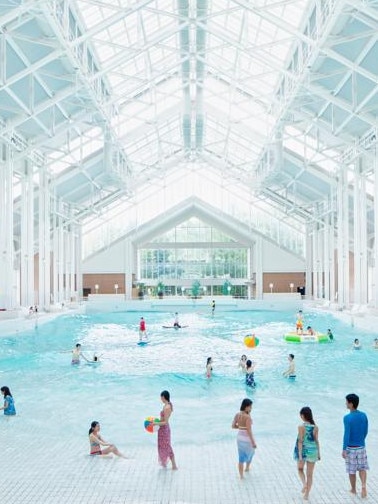
Furano
This world-class central Hokkaido resort caters across the skiing spectrum, from gentle groomers for beginners to stunning side-country for off-piste explorers. The village vibe is enchanting around Ningle Terrace, a cluster of log cabins selling local art and crafts, linked by a timber boardwalk; it’s particularly beautiful at night, when it’s strung with fairy lights and you can nip into an igloo ice bar for a cocktail. Furano is just an hour from the vibrant city of Asahikawa, the place to base yourself for an authentic Japanese experience. From there you can also access Kamui Ski Links and the powder-filled backcountry of Mt Asahidake, the highest mountain in Hokkaido.
Club Med Kiroro
Japan’s newest Club Med ski hotels remove the organisational hassle of ski trip, right down to having your ski equipment waiting in a locker on arrival. Located between Sapporo and Niseko, Kiroro spans two mountains and gets the snow early in the season, making it a good bet if your holidays fall in December. Group ski or snowboard lessons are included in every package, along with lift passes, meals and drinks. Kiroro Peak has an adult focus, while Kiroro Grand welcomes families with younger children.

To join the conversation, please log in. Don't have an account? Register
Join the conversation, you are commenting as Logout